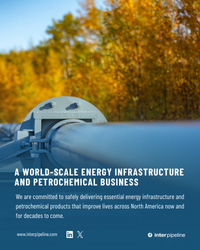As new ethane-only steam crackers come online and ethane exports accelerate, ethane demand is ramping up from 1.3 MMb/d today to somewhere between 2.1 and 2.3 MMb/d in 2022. The good news is that a lot of new ethane supply is becoming available — from high-Btu Permian associated gas, more gas from other oil-focused plays, and of course rapidly growing Marcellus/Utica production. Depending on what happens to oil and gas prices, somewhere between 2.5 and 3.2 MMb/d of “potential” ethane could be available by 2022 to meet that demand. So, no problem, right? Not so fast. Some of this potential ethane will be very expensive to get to market, and some won’t be able to get to market at all due to pipeline capacity constraints. How these market dynamics play out raises the possibility of wide swings in ethane prices. Today we will explore how this may play out.
We have talked a lot about ethane and its unique market dynamics in the RBN blogosphere — it’s the only energy commodity that can morph from being sold as natural gas to being sold to petrochemical plants as a liquid feedstock. This is Part 3 of a series in which we look forward based on RBN’s most recent forecasts of ethane supply and demand. In Part 1, we discussed one of the most important factors that will indicate how the current ethane market transformation will take place — namely, the ratio of Mont Belvieu ethane prices to the Henry Hub natural gas price on a per-Btu basis. This ratio is an indicator of the relative value of ethane as a petrochemical feedstock versus ethane sold as natural gas (ethane rejection). The higher the ratio of ethane to natural gas prices/Btu, the greater the volume of ethane that is recovered as a liquid feedstock for the petrochemical industry. That ratio is up from 1:1 last year to 1.4:1 this year, and that shift has been a major driver for increasing ethane production, which is up about 90 Mb/d (2017 year-to-date versus 2016 average), or 70% of the growth in total NGL production growth of about 130 Mb/d. In other words, ethane has been responsible for most of the increase in NGL production over the past year, with most of the volume coming from ethane that previously was being rejected.
Then in Part 2, we looked at what is happening on the demand side of the ethane equation, including the timing of new steam-cracker startups, how much additional ethane they will use, the pace of ethane export growth, and the trends in the cents-per-pound margin for producing ethylene from ethane.
Figure 1 shows the magnitude of increasing ethane demand in 2018 and beyond under RBN’s “Growth Scenario” for crude oil and natural gas pricing, which assumes that prices for benchmark West Texas Intermediate (WTI) crude will increase from the 2017 average (just below $50/bbl) to $57/bbl in 2022 and that natural gas will be at or near the current forward curve of about $3.00/MMBtu for at least the next five years. Based on these expectations, the sum of ethane petrochemical and export demand will increase from about 1.3 MMb/d in 2017 to 2.3 MMb/d in 2022. Petchems (purple bars) increase from 1.1 to 1.9 MMb/d while exports (blue bars) increase from 200 to 400 Mb/d. That’s a total of 1 million barrels per day (1.0 MMb/d) of new demand. About 75% of the incremental supply needed to meet that demand will come from increased production at the wellhead, and 25% will come from recovery and processing of ethane that is currently being rejected into gas. Since the only thing that motivates gas processors to recover more ethane is higher ethane prices relative to natural gas prices — the ratio we discussed above — that means that ethane prices will be increasing. The only question is, by how much?
Join Backstage Pass to Read Full Article










